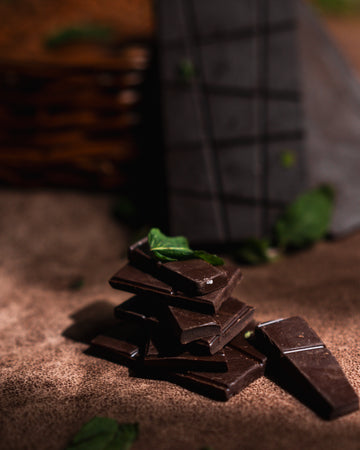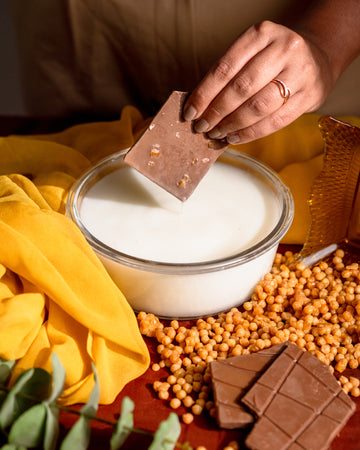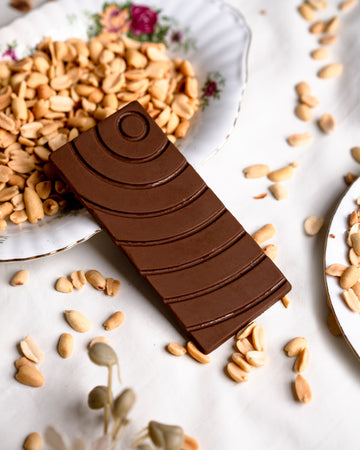The Art of Handmade Chocolates
Making chocolates by hand is a real craft; it's about precision, patience, and care. It starts with choosing quality cocoa beans, often sourced from exotic locations around the world. Chocolatiers roast and grind these beans, coaxing out the intricate flavors. Every step, from tempering the chocolate to give it that perfect snap and glossy finish, to shaping and decorating each piece, demands skill. Unlike mass-produced bars, handmade chocolates often have unique textures and fillings that reflect the maker’s creativity. They're not just treats, they tell a story, offering a glimpse into the care and tradition poured into every batch. The final creations are not just chocolates—they're edible art, meant to be savoured and appreciated like a fine wine or a masterful painting.

Tracing the Roots of Chocolate Making Traditions
Chocolate making is an art that dates back to ancient times, and its traditions form the foundation of even the most innovative confections we enjoy today. Originally discovered and cultivated by the indigenous peoples of Mesoamerica, chocolate began as a bitter beverage and a prized ceremonial staple. By the time the Spanish explorers brought it back to Europe, chocolate's allure began to spread. The Europeans added sugar, and soon, the treat we recognise as chocolate started to take shape.
Fast forward to the present, and those time-honoured methods are still in play. Skilled artisans craft handmade chocolates with a nod to history—meticulously selecting the finest cacao beans, roasting them to coax out complex flavors, and blending them with choice ingredients. These creators are not just chocolatiers; they are guardians of an enduring legacy, infusing each batch with a piece of the past. Even with modern twists like exotic spices or avant-garde designs, the essence of traditional chocolate making persists. It's this blend of the old with the new that gives artisan chocolates their unique character and soul-stirring taste.
The Ingredients That Define Handmade Chocolates
Handmade chocolates are all about quality and the personal touch. When chocolate artisans make these sweets, they pick the best cocoa beans. These beans are the heart of chocolate and can come from places like Ivory Coast or Venezuela. Each brings a unique flavour, from fruity to nutty. Then there are sugars. Forget the regular stuff; high-end chocolates use cane sugar or even coconut sugar for a twist. And the milk in milk chocolates is not your everyday kind. Artisans prefer full-fat milk powder or even fresh cream for richness you can taste. But the real game-changer? It's the extras – think local nuts, handpicked sea salt, or organic vanilla beans. These ingredients are what make handmade chocolates stand out, turning a simple treat into a deluxe experience.
Incorporating Innovative Techniques in Chocolate Crafting
Crafting chocolate is both an art and a science, and modern chocolatiers are continuously pushing the boundaries of tradition. Innovation in chocolate making can take numerous forms, from experimenting with unusual flavor pairings to employing cutting-edge techniques like molecular gastronomy. For instance, using freeze-dried fruits and spices can inject intense, concentrated flavors into chocolates. The inclusion of savoury elements such small hints of spice like chilli has become more common, elevating the chocolate tasting experience. Additionally, innovative molds and design tools enable artisans to create intricate, eye-catching shapes that were once thought impossible. By embracing these innovations while respecting traditional methods, chocolate crafters achieve a delicate balance that results in exceptional confections, offering a taste that is both familiar and refreshingly new.
Unique Flavors and Fillings in Handmade Chocolates
When you bite into a handmade chocolate, it's not just the texture that delights your senses, it's the rush of unexpected flavors and fillings. Chocolate artisans are not afraid to experiment, and they toss out the rulebook when creating unique taste profiles. Think beyond vanilla and hazelnut, and say hello to bold blends like spicy chilli, zingy citrus, nestled within a chocolate shell. They mix in local spices, herbs, and seasonal fruits to craft a chocolate experience that is both rooted in tradition and wildly innovative. Whether it's a dash of sea salt to intensify the sweetness or a splash of whiskey for a warm, deep note, these chocolates are a melting pot of surprises. The result? Each piece is not just a treat, but a journey through flavor that leaves you savoring the moment and eager for the next.
The Process: From Cocoa Bean to Confection
Crafting handmade chocolate is an art that honours tradition while embracing innovation to create exceptional confections. The journey starts with selecting high-quality cocoa beans, which are the seeds of the cacao tree. These beans are harvested by hand, ensuring only the best are chosen for the chocolate-making process. Once selected, they're fermented for several days to develop flavour and then dried under the sun which is crucial for locking in the distinctive chocolate taste.
Next up is roasting, an essential step that intensifies flavour and gives chocolate its rich, warm hue. The roasting profile varies depending on the desired result, but it's always performed with precision to coax out the beans' intricate flavors. After roasting, the beans are cracked open, and their inner nibs are ground into cocoa mass. The mass is blended with varying amounts of cocoa butter and sugar, defining the type of chocolate being made—be it dark, milk, or white.
Through a process called conching, the chocolate's texture is refined. Conching involves heating and stirring the chocolate mixture for hours until it reaches a smooth, silky consistency. This is the stage where the magic happens—flavour profiles emerge, bitterness subsides, and the chocolate's mouthfeel becomes luxurious.
Finally, the liquid chocolate is tempered, which means it's carefully cooled and reheated to stabilise the cocoa butter crystals. This results in chocolate that has a satisfying snap, a clean shine, and a melt-in-your-mouth quality. Molds give the chocolate its final shape, whether it's bars, truffles, or bespoke creations. Once set, these handmade delights are ready to satisfy any sweet tooth, representing a labor of love from the cocoa bean to the finished confection.
The Role of Craftsmanship in Chocolate Creation
Craftsmanship is the heartbeat of exceptional handmade chocolates. Unlike mass-produced treats, artisan chocolatiers are artists who carefully select ingredients and spend hours crafting each batch to perfection. They combine tradition with a twist of innovation, ensuring every piece tells a story of quality and creativity. From roasting the beans to the final decorative touches, it's the attention to detail that makes handmade chocolates stand out. When you bite into one, you're tasting not just cocoa, but the dedication and passion that went into making it. This personalised touch is why handmade chocolates can be a little pricier but also more memorable.
Pairing and Tasting Handmade Chocolates
When it comes to pairing and tasting handmade chocolates, it's all about the experience. First off, let's talk about the basics of tasting – you'll want to use your senses. Start with sight, examining the chocolate's appearance; a glossy finish is a sign of quality. Next, break a piece and listen for a sharp snap, which suggests a good temper. Now, take a sniff. Quality chocolate comes with a rich bouquet of aromas.
When tasting, let the chocolate melt on your tongue to release the full spectrum of flavors. Is it fruity, nutty, or do you get hints of coffee or caramel? Every handmade chocolate is unique.
As for pairing, think balance. A simple rule is to match lighter chocolates with lighter accompaniments like white wines and to pair dark chocolates with bolder flavors like a robust red wine or a stout beer. But don't be afraid to experiment – there's a world of teas, coffees, and even whiskies that can enhance the flavour of your chocolate. Remember, there's no right or wrong here. Trust your palate and enjoy the adventure that handmade chocolates offer.
Sustainability and Ethical Practices in Chocolate Making
When it comes to crafting handmade chocolates, sustainability and ethical practices are more than just buzzwords; they're the foundation for responsible indulgence. Chocolatiers committed to this philosophy source cacao responsibly, ensuring fair trade and support for cacao farmers. By doing so, they help improve the livelihoods of farming communities and foster environmentally friendly farming techniques. Choosing sustainably grown cacao also means better quality beans, which results in a superior taste experience for you. These chocolate makers might also use organic ingredients, further reducing the impact on the planet. When you savour a piece of ethical, handcrafted chocolate, you're not just treating your taste buds; you're part of a movement that takes care of the earth and its people.
Where to Find Exceptional Handmade Chocolates and What to Look For
Finding exceptional handmade chocolates can be a delightful quest. Seek out local chocolatiers or specialty stores for a personal experience. These artisans often use traditional techniques and infuse their creations with innovative flavors. You can also explore gourmet sections in high-end grocery stores or browse online for chocolate makers that deliver nationwide. When searching for these treats, pay attention to the quality of ingredients – the best chocolates start with high-quality cocoa. Look for chocolates that list cocoa or cocoa butter as the first ingredient, as this is a sign of purity. Also, check for small-batch production which tends to ensure better craftsmanship and attention to detail. The packaging can tell you a lot too; look for information about the sourcing of ingredients and any awards the chocolatier may have received. These hints often point towards superior taste and quality. Remember, good handmade chocolates may cost more, but the sensory experience they provide is usually worth the extra pennies.




